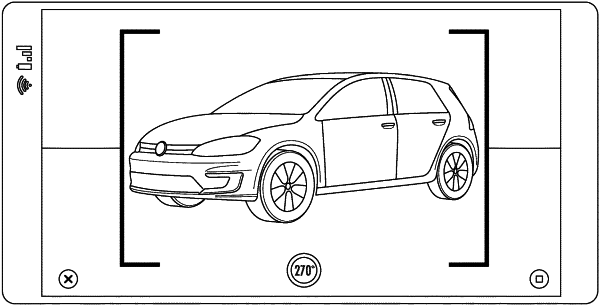| CPC G06T 19/20 (2013.01) [G06N 20/00 (2019.01); G06T 7/0004 (2013.01); G06T 7/11 (2017.01); G06T 7/194 (2017.01); G06T 15/205 (2013.01); G06V 10/764 (2022.01); G06T 2207/20081 (2013.01); G06T 2207/30252 (2013.01); G06T 2219/2016 (2013.01)] | 14 Claims |

|
1. A method for generating an interactive rotatable spin presentation of an object, the method comprising:
providing a list of image classifications comprising:
a) a first image classification;
b) a second image classification;
c) a third image classification;
d) a fourth image classification;
capturing a plurality of images of the object, wherein the plurality of images comprises:
a) a first image of at least a first portion of the object;
b) a second image of at least a second portion of the object, wherein the second portion is different than the first portion;
c) a third image of at least a third portion of the object, wherein the third portion is different than the first portion and the second portion;
d) a fourth image of at least a fourth portion of the object, wherein the fourth portion is different than the first portion, the second portion, and the third portion;
wherein, when ordered in a first sequence, the first image, the second image, the third image, and the fourth image do not represent a rotational progression around the object;
wherein, when ordered in a second sequence, the first image, the second image, the third image, and the fourth image represent a rotational progression around the object;
using machine learning artificial intelligence to automatically classify the first image as the first image classification using the first portion;
using machine learning artificial intelligence to automatically classify the second image as the second image classification using the second portion;
using machine learning artificial intelligence to automatically classify the third image as the third image classification using the third portion;
using machine learning artificial intelligence to automatically classify the fourth image as the fourth image classification using the fourth portion and;
ordering the first image, the second image, the third image and the fourth image into the first sequence;
using machine learning artificial intelligence, the first image classification, the second image classification, the third image classification, and the fourth image classification to automatically order the first image, the second image, the third image, and the fourth image from the first sequence to the second sequence;
automatically combining the first image, the second image, the third image, and the fourth image to create a spin in the second sequence;
displaying the spin on a display; and
manipulating the spin on the display from a first perspective of the object to a second perspective of the object.
|